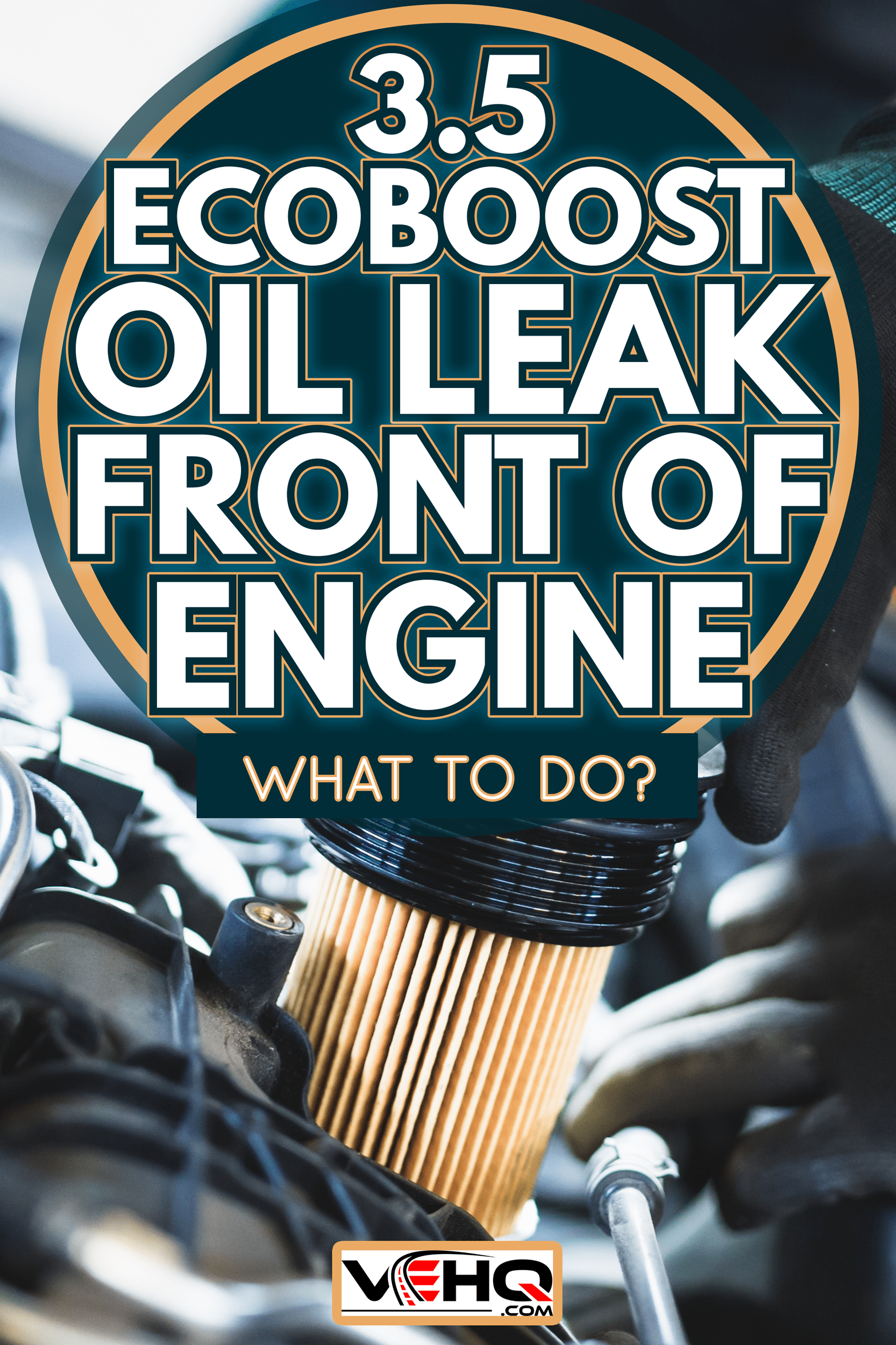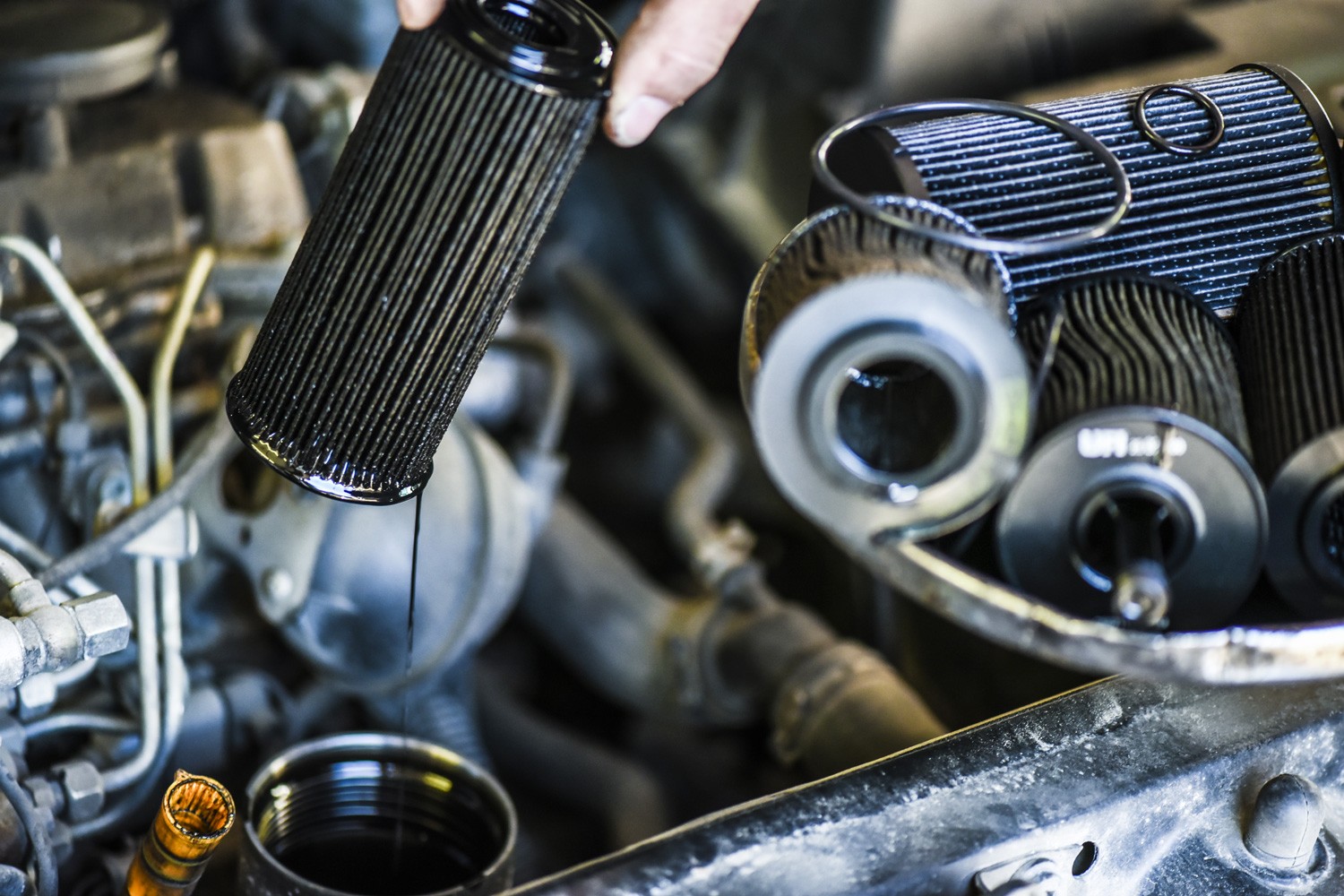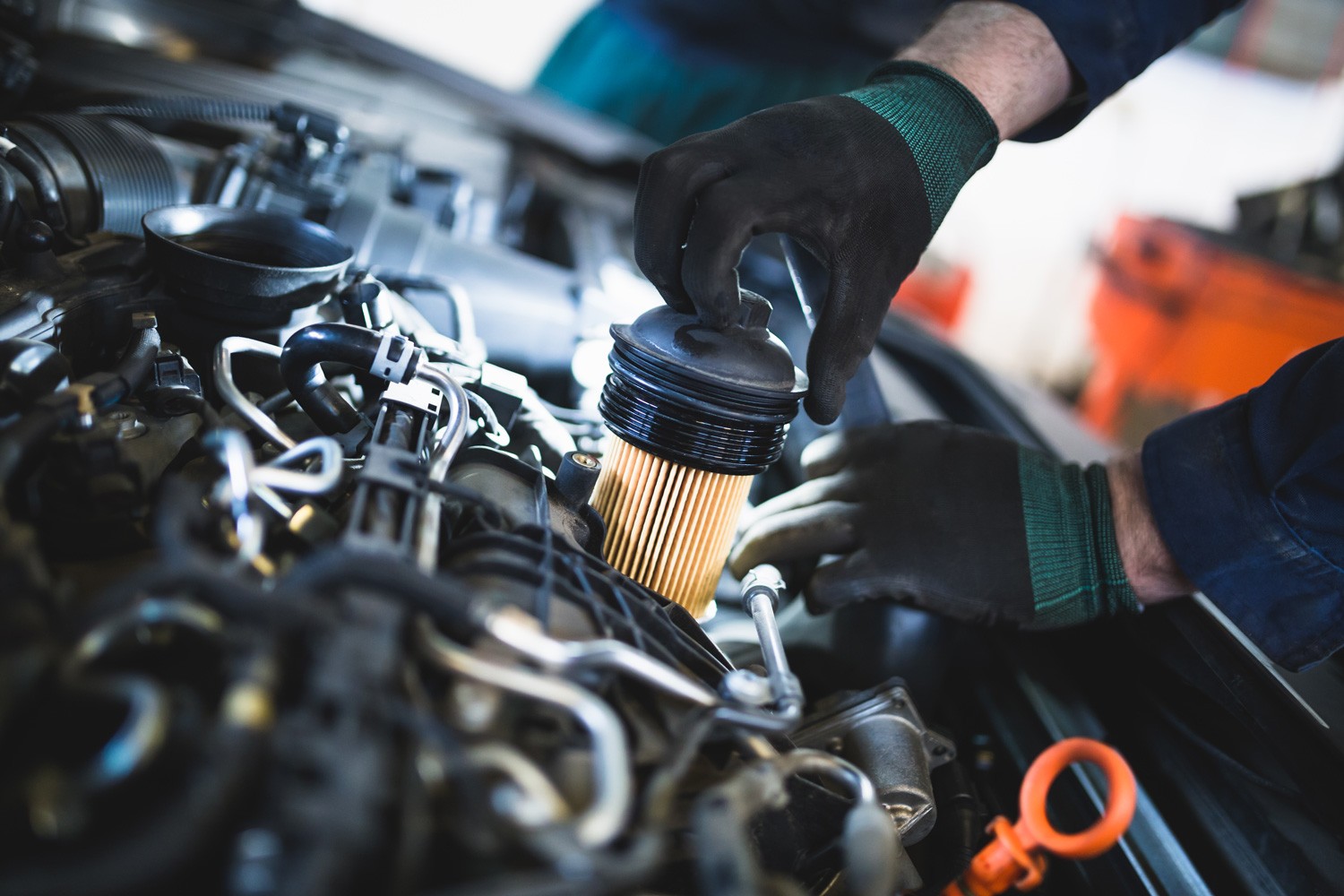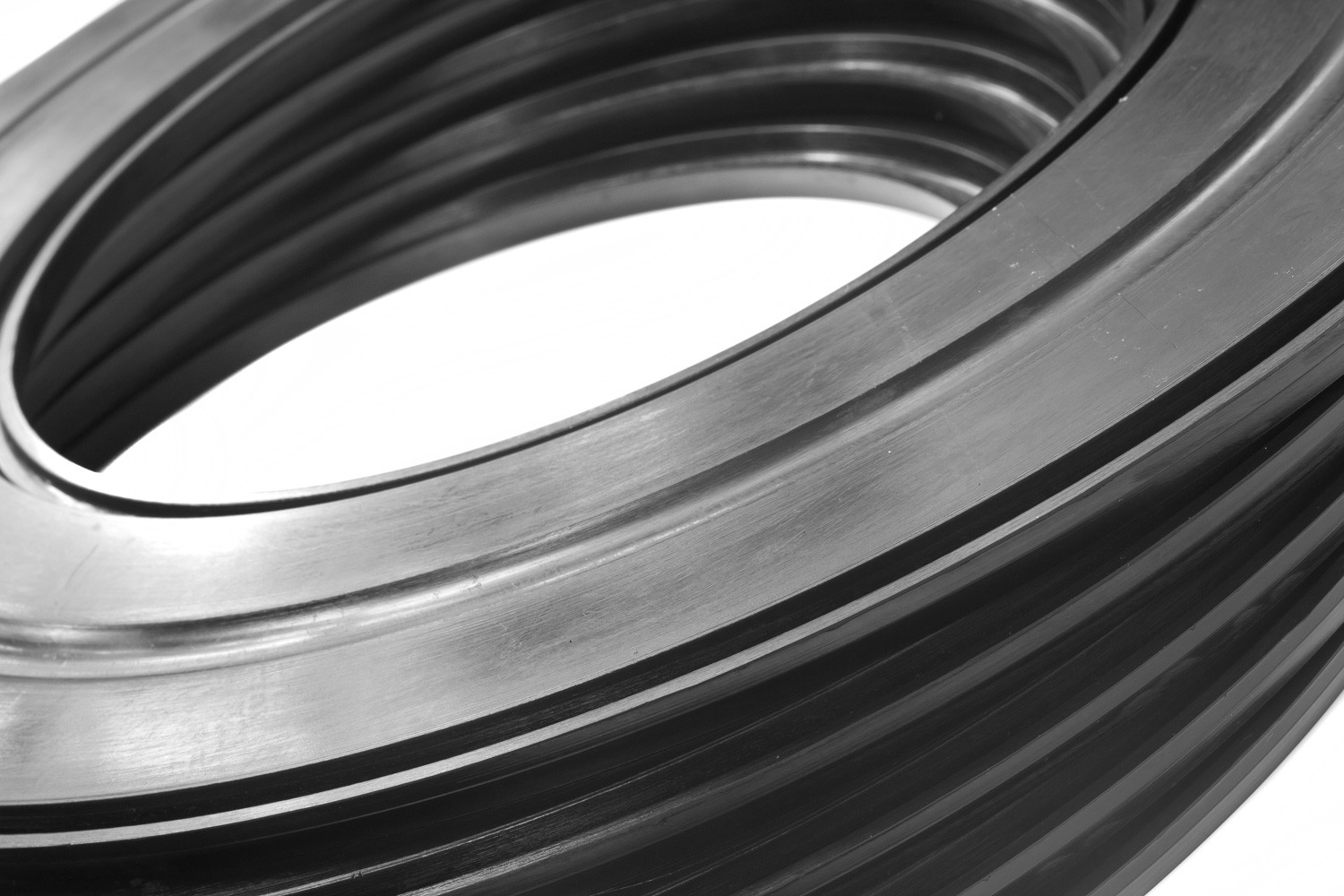Do you have oil leaks from under your Ford F-150 with the 3.5L EcoBoost engine, and do you want to know what you can do to address the issue? You’ve come to the right place, for we have researched this question, and we have the answer for you.
There are several possible reasons why your F-150 is leaking oil from its EcoBoost engine:
- Loose oil pan drain plug
- Loose oil filter
- Oil pan leak
- Worn out seals
- Failing valve gaskets
- Worn oil pump gasket
- Vacuum pump seal leak
- Leaky engine gaskets
The list above is arranged from the simplest and least expensive to fix to the most complicated and most expensive to fix. Learn more about each one from the succeeding sections. Read on!

How to fix an oil pan drain plug leak?
The oil pan is at the bottom area of the crankcase. It serves as the reservoir for the oil that lubricates the engine.
The oil pan has a drain plug, and it seals the hole where you drain old oil before you put in the new oil. The drain plug is technically a screw that is lined with a washer. There are two ways that the drain plug develops leaks.
Stripping The Drain Plug
The oil pan drain plug is a type of screw. If you screw it too tight, then you can strip the thread of the screw. This will cause the drain plug to become ineffective in preventing motor oil from leaking through the drain hole.
Car manufacturers recommend a specific torque when you tighten the drain plug. Going above this torque can strip the drain plug. This is the reason why it is important to always use a torque wrench when tightening the drain plug.
To fix this issue, replace the old drain plug with a slightly larger drain plug. Use the larger drain plug to cut new threads on the oil pan. Use a socket and a ratchet and slowly tighten the bolt. When you reach the washer at the end of the bolt, tighten it until it is snug but do not over-tighten it, or you can strip the bolt again.
Loose Drain Plug
If the drain plug was not reinstalled properly when you had your oil changed, then the loose drain plug will cause oil leaks. In some cases, the washer on the drain plug is worn. It is good practice to replace the washer on your drain plug with every other oil change.
To fix this issue, find out the recommended torque for the drain plug of your car model. Get a torque wrench and adjust it to the required torque and tighten the drain bolt with it.
The next time you change your engine oil, make sure to replace the washer too.
How to fix an oil filter gasket leak?

Each time you change your oil, you also need to replace the oil filter. When you buy a replacement oil filter, it will also come with a rubber gasket.
However, when the oil filter is not correctly installed, the rubber gasket will not make a proper seal. Additionally, if you replace the oil filter in a dirty environment, dirt and debris can make it to the rubber gasket and prevent it from making a proper seal.
If the oil filter is only loose, tighten it by hand to get rid of the leak. If you still have oil leaks through the oil filter, then you will have to replace it.
Always dab a little fresh oil on the rubber gasket before installing it. This will make it easier for the rubber gasket to slide into place and make a tight seal.
This Bosch oil filter is compatible with Ford models, available on Amazon through this link.
How to fix an oil pan leak?
An accident or road debris can cause impact damage to the oil pan. Multiple impact damage over the years can eventually crack the oil pan. This is more likely to happen if the oil pan is cast aluminum than if it is made of stamped steel.
Unfortunately, the only way to fix an oil pan leak is to replace it.
How to fix worn-out seals that cause oil leaks?

Your Ford truck has many seals that normally wear out after years of use. Additionally, these seals are made of rubber, and they can dry up and shrink. Once this happens, the seals will no longer be able to keep the oil in.
However, some of these seals are in hard-to-reach areas. If this is the case, you can try to use a seal leak stopper first. You can mix these products with the engine oil, and it will work on the leaking seal.
It rejuvenates the rubber in the seals. Once rejuvenation is complete, the seals will secure the connections once more and prevent oil from leaking.
Drive your car for two to three hours and let the seal work on the leaks.
If the seal leak stopper doesn’t fix the problem, you will have to bring your Ford truck to a professional mechanic to fix the leak for you.
How to fix deteriorated valve gaskets?
A valve gasket or a valve cover gasket has two important jobs for your engine.
Its first job is to protect the parts of the cylinder—especially the cylinder head—from the elements. Its second job is to keep the engine oil inside the engine. It is your engine’s two-way barrier, and it is often made of rubber, plastic, or cork.
However, the valve gasket can wear out over time or get damaged when the engine overheats. Damage to the valve gasket can lead to debris and particles making their way to the cylinders. This can accelerate wear and shorten the life of the engine. Additionally, damage to the valve gasket can cause oil leaks.
One of the most common signs of a leaky valve gasket is a drop in the level of engine oil. Another sign is the smell of something burning under the hood.
Replace leaky valve gaskets right away before they cause more serious damage. Bring your Ford truck to a service center or a professional mechanic to replace the valve gasket.
How to fix worn oil pump seals?

The oil pump is responsible for pushing oil into the different parts of the engine so that they will get proper lubrication. Without proper lubrication, friction will accelerate the wear and tear of the engine and reduce its lifespan.
The oil pump seals can be found between the oil pump cover and the engine. It makes sure that oil will not leak out of the oil pump as it does its job.
However, like all seals in your Ford truck, the oil pump seal will eventually wear out and needs to be replaced. Replacing the oil pump seal requires that you remove the oil pump cover to get to the old oil pump seals. Before you can remove the oil pump cover, you need to remove the timing belt that provides power to the oil pump.
If you’re not comfortable doing this on your Ford truck, bring it to a professional mechanic to do it for you.
How to fix a leaky vacuum pump seal?
Vacuum pumps are responsible for removing air from the brake booster tank. It is often powered by the camshaft. In modern engine designs, the vacuum pump also provides actuation power for the turbocharger wastegate.
Similar to the oil pump, the vacuum pump has a similar seal that wears out as you drive your Ford truck. You will need to replace a worn vacuum pump seal to stop it from leaking oil.
The vacuum pump is often installed at the back of the engine close to the passenger side in most newer Ford F-150 trucks. If you’re not confident in removing the vacuum pump and replacing the seal inside, bring your Ford truck to a mechanic to replace the vacuum pump seal.
How to fix leaky engine head gaskets?

Head gaskets are like valve gaskets. They provide the necessary seal between the engine block and the cylinder heads. It serves as a two-way seal by preventing combustion byproducts from leaving the cylinders and preventing the coolant and the engine oil from making their way into the cylinders.
A head gasket can have an internal or an external leak.
Internal leaks allow the coolant or the engine oil to get into the cylinders. External leaks, on the other hand, allow the coolant and the engine oil to leak out of the engine.
The common reason why head gaskets fail is repeated overheating or driving your vehicle even after it has overheated. Therefore, a well-functioning cooling system is important to any vehicle.
Replacing the head gasket of your 3.5L EcoBoost requires knowledge and experience. It is best to bring your Ford truck to a professional mechanic who can replace the head gasket for you.
You have to be aware that this is an expensive repair.
Conclusion
Oil leaks on the 3.5L EcoBoost can be caused by many things. Some can be as easy to fix as tightening a loose bolt, or they can be as hard and expensive as taking the engine apart.
If you enjoyed reading this article, you might find the articles below equally enjoyable to read:


